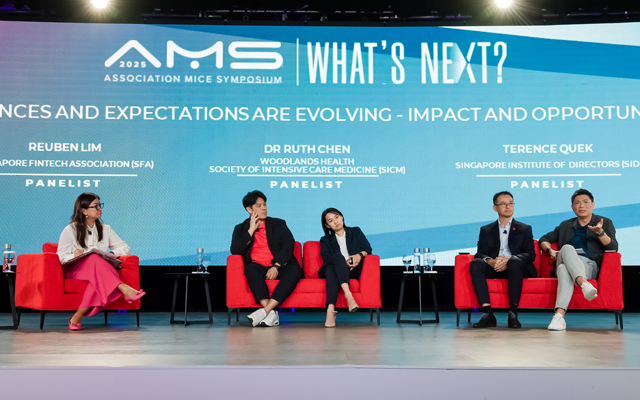
Attendee expectations for association events have shifted post-pandemic, and association leaders in Singapore are responding to this by prioritising in-person engagement to encourage deeper connections, and providing tangible, real-world value, moving beyond simple content delivery.
These insights were shared on a panel entitled How Event Audiences and Expectations are Evolving – Impact and Opportunities for Associations, at the inaugural Association MICE Symposium – part of the Singapore MICE Forum – yesterday morning.

Wei Chan, honorary secretary, Restaurant Association of Singapore (RAS) – which co-organises the annual Restaurant Asia tradeshow – emphasised creating an “experience” beyond just walkthroughs in exhibition halls.
He related how at this year’s Restaurant Asia, the team created a Nightlife & Entertainment Pavilion for the first time, showcasing Asia’s vibrant nightlife, focusing on mixology, bar concepts, and beverage innovations.
Chan also shared how there were discussions with chef Edward Lee – the runner-up on the popular Netflix cooking competition show Culinary Class Wars – to curate a three-course meal as a fringe event, but this idea was scrapped due to budget concerns.
“We need to create different experiences, to think outside the box, (to entice) delegates to want to attend events in Singapore ,” he stressed.
Another panellist, Reuben Lim, CEO, Singapore FinTech Association, advised: “Bring up a deeper discussion you can’t do virtually, allowing attendees to truly engage beyond what’s available online.”
Events like SFF, he explained, are also successful because they function as a central hub for various stakeholders, letting delegates consolidate multiple meetings in Singapore and saving them extensive travel. “They plan all these meetings around SFF, where three to five days in Singapore would be a very good use of their time. It’s also more (environmentally) sustainable as well.”
For Terence Quek, CEO of the Singapore Institute of Directors (SID), the content of SID’s conferences must be compelling that it drives attendance, particularly when focused on practical, real-world relevance.
During SID’s conferences, Quek shared, “best practices are highlighted”, alongside common pitfalls, with lessons drawn from past mistakes. “This approach makes the content directly relatable, as we focus on practical takeaways that help directors excel in their roles, not just avoid legal trouble. We also don’t record the conference, which probably makes it more interesting.”
In addition to making the conference content compelling enough for delegates to travel “six to 12 hours to Singapore for three days”, Ruth Chen, honorary treasurer, Society of Intensive Care Medicine (SICM) Singapore, shared that what happens post-conference is “very important” for her association.
She emphasised that “the conference is where we meet in person, and want to continue that relationship afterwards”, noting that partnerships and projects with hospitals require these face-to-face discussions.
As such, there has also been a decline in hybrid and online conferences, with delegates preferring face-to-face events, panellists observed.
“There was one year (post-pandemic) we tried to do a Metaverse conference, where your avatar would go online and meet everyone. It was a terrible idea (for us), and discovered that people didn’t bother to sign in. I think that we’re still a long way from this,” opined Chen.
Quek agreed with the decision to move away from hybrid events, finding them “very challenging” as it was effectively “organising two events at the same time”.












